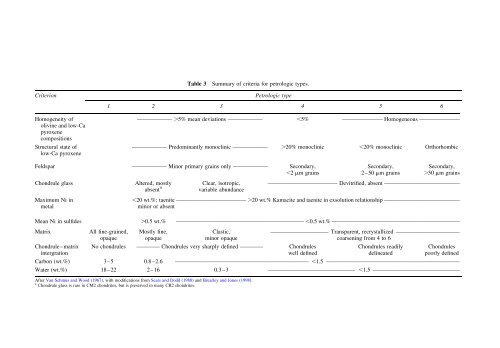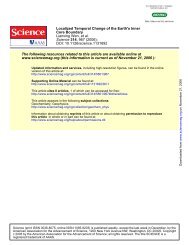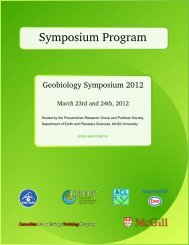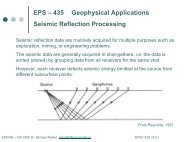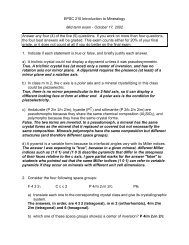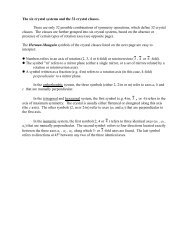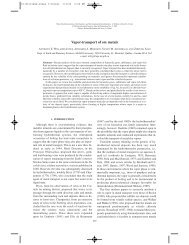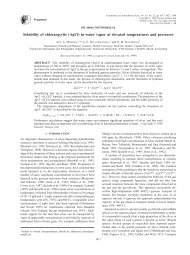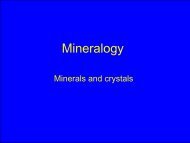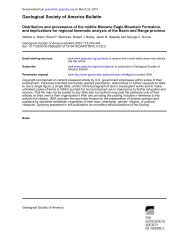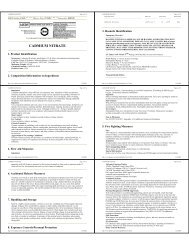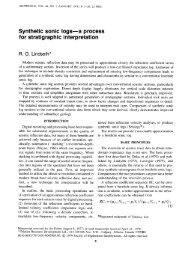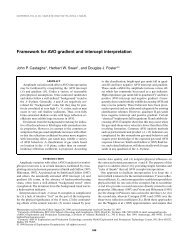05 Classification of.. - Department of Earth and Planetary Sciences
05 Classification of.. - Department of Earth and Planetary Sciences
05 Classification of.. - Department of Earth and Planetary Sciences
Create successful ePaper yourself
Turn your PDF publications into a flip-book with our unique Google optimized e-Paper software.
Table 3<br />
Summary <strong>of</strong> criteria for petrologic types.<br />
Criterion<br />
Petrologic type<br />
1 2 3 4 5 6<br />
Homogeneity <strong>of</strong> —————— .5% mean deviations —————— ,5% ——————— Homogeneous ———————<br />
olivine <strong>and</strong> low-Ca<br />
pyroxene<br />
compositions<br />
Structural state <strong>of</strong><br />
low-Ca pyroxene<br />
—————— Predominantly monoclinic —————— .20% monoclinic ,20% monoclinic Orthorhombic<br />
Feldspar —————— Minor primary grains only —————— Secondary,<br />
,2 mm grains<br />
Secondary,<br />
2–50 mm grains<br />
Secondary,<br />
.50 mm grains<br />
Chondrule glass<br />
Altered, mostly<br />
absent a<br />
Clear, isotropic,<br />
variable abundance<br />
———————————— Devitrified, absent —————————————<br />
Maximum Ni in<br />
metal<br />
,20 wt.%; taenite ———————————— .20 wt.% Kamacite <strong>and</strong> taenite in exsolution relationship —————————————<br />
minor or absent<br />
Mean Ni in sulfides .0.5 wt.% —————————————————————— ,0.5 wt.% ——————————————————————<br />
Matrix<br />
All fine-grained,<br />
opaque<br />
Mostly fine,<br />
opaque<br />
Clastic,<br />
minor opaque<br />
—————————— Transparent, recrystallized ———————————<br />
coarsening from 4 to 6<br />
Chondrule–matrix<br />
intergration<br />
No chondrules ———— Chondrules very sharply defined ———— Chondrules<br />
well defined<br />
Chondrules readily<br />
delineated<br />
Chondrules<br />
poorly defined<br />
Carbon (wt.%) 3–5 0.8–2.6 ——————————————————————— ,1.5 ———————————————————————<br />
Water (wt.%) 18–22 2–16 0.3–3 ——————————————— ,1.5 ———————————————<br />
After Van Schmus <strong>and</strong> Wood (1967), with modifications from Sears <strong>and</strong> Dodd (1988) <strong>and</strong> Brearley <strong>and</strong> Jones (1998).<br />
a Chondrule glass is rare in CM2 chondrites, but is preserved in many CR2 chondrites.


